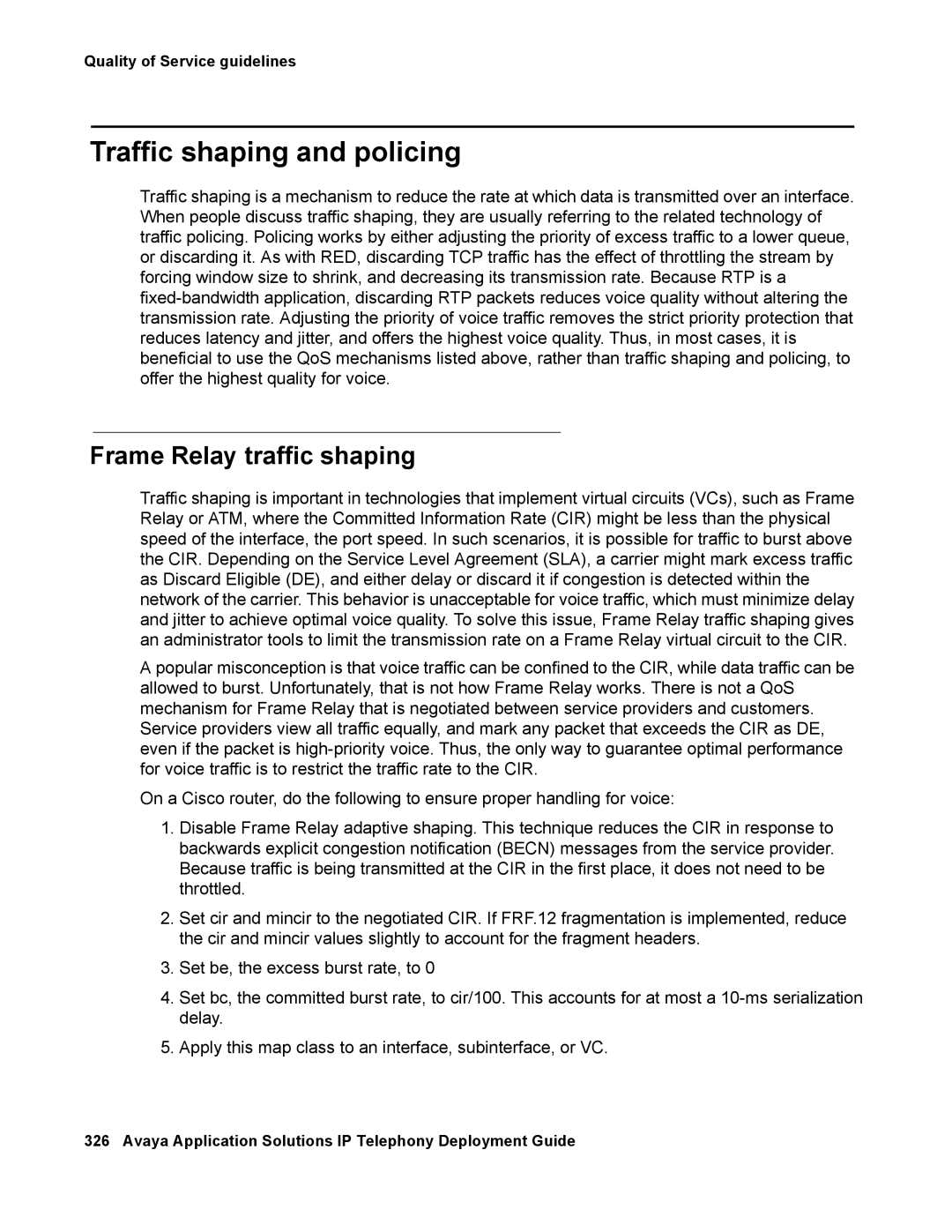
Quality of Service guidelines
Traffic shaping and policing
Traffic shaping is a mechanism to reduce the rate at which data is transmitted over an interface. When people discuss traffic shaping, they are usually referring to the related technology of traffic policing. Policing works by either adjusting the priority of excess traffic to a lower queue, or discarding it. As with RED, discarding TCP traffic has the effect of throttling the stream by forcing window size to shrink, and decreasing its transmission rate. Because RTP is a
Frame Relay traffic shaping
Traffic shaping is important in technologies that implement virtual circuits (VCs), such as Frame Relay or ATM, where the Committed Information Rate (CIR) might be less than the physical speed of the interface, the port speed. In such scenarios, it is possible for traffic to burst above the CIR. Depending on the Service Level Agreement (SLA), a carrier might mark excess traffic as Discard Eligible (DE), and either delay or discard it if congestion is detected within the network of the carrier. This behavior is unacceptable for voice traffic, which must minimize delay and jitter to achieve optimal voice quality. To solve this issue, Frame Relay traffic shaping gives an administrator tools to limit the transmission rate on a Frame Relay virtual circuit to the CIR.
A popular misconception is that voice traffic can be confined to the CIR, while data traffic can be allowed to burst. Unfortunately, that is not how Frame Relay works. There is not a QoS mechanism for Frame Relay that is negotiated between service providers and customers. Service providers view all traffic equally, and mark any packet that exceeds the CIR as DE, even if the packet is
On a Cisco router, do the following to ensure proper handling for voice:
1.Disable Frame Relay adaptive shaping. This technique reduces the CIR in response to backwards explicit congestion notification (BECN) messages from the service provider. Because traffic is being transmitted at the CIR in the first place, it does not need to be throttled.
2.Set cir and mincir to the negotiated CIR. If FRF.12 fragmentation is implemented, reduce the cir and mincir values slightly to account for the fragment headers.
3.Set be, the excess burst rate, to 0
4.Set bc, the committed burst rate, to cir/100. This accounts for at most a
5.Apply this map class to an interface, subinterface, or VC.
